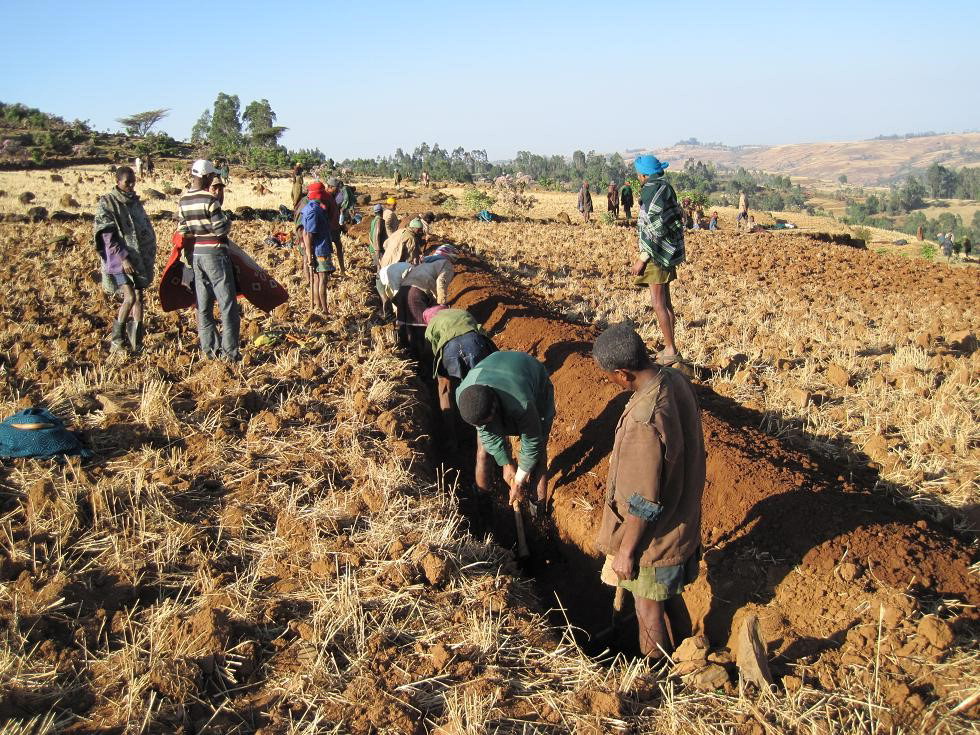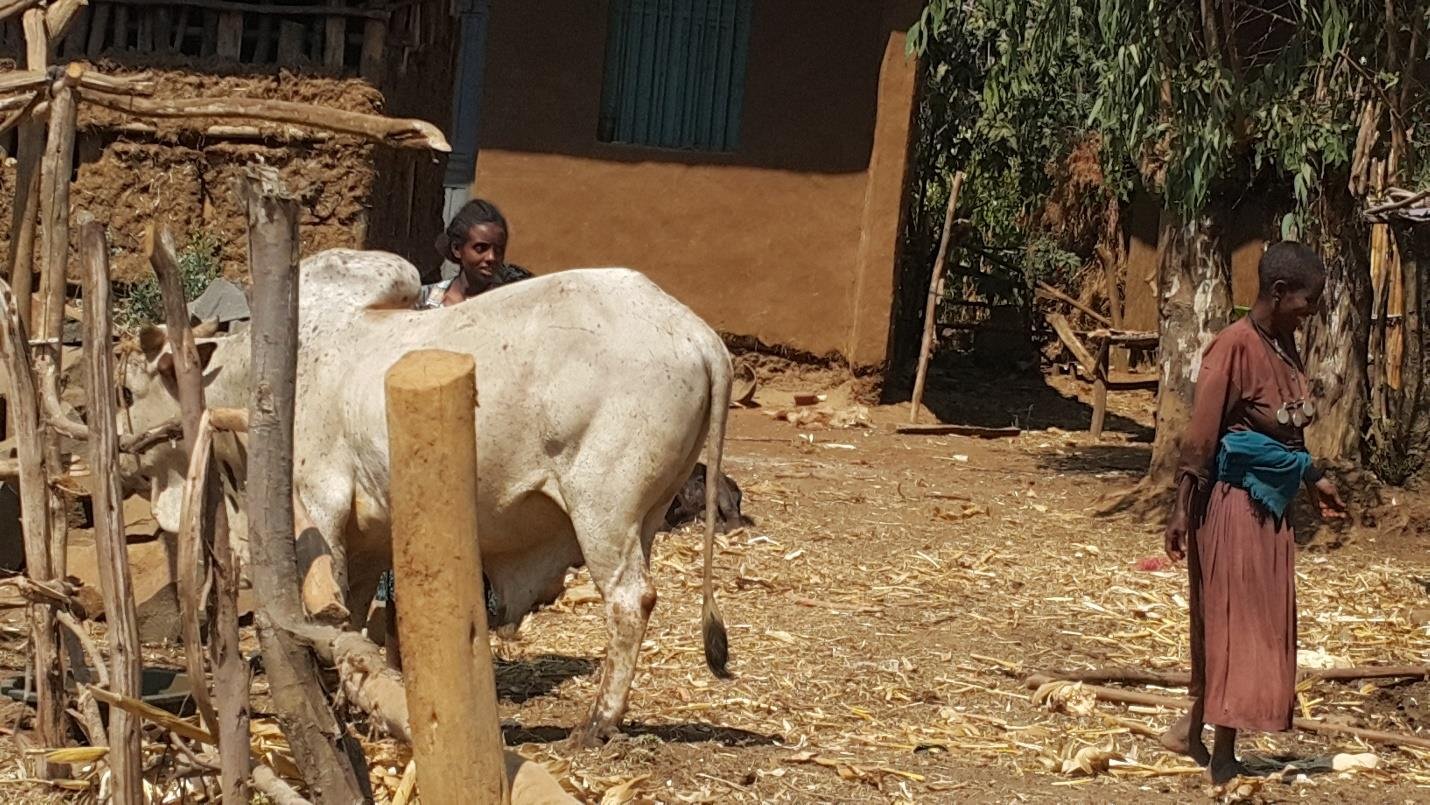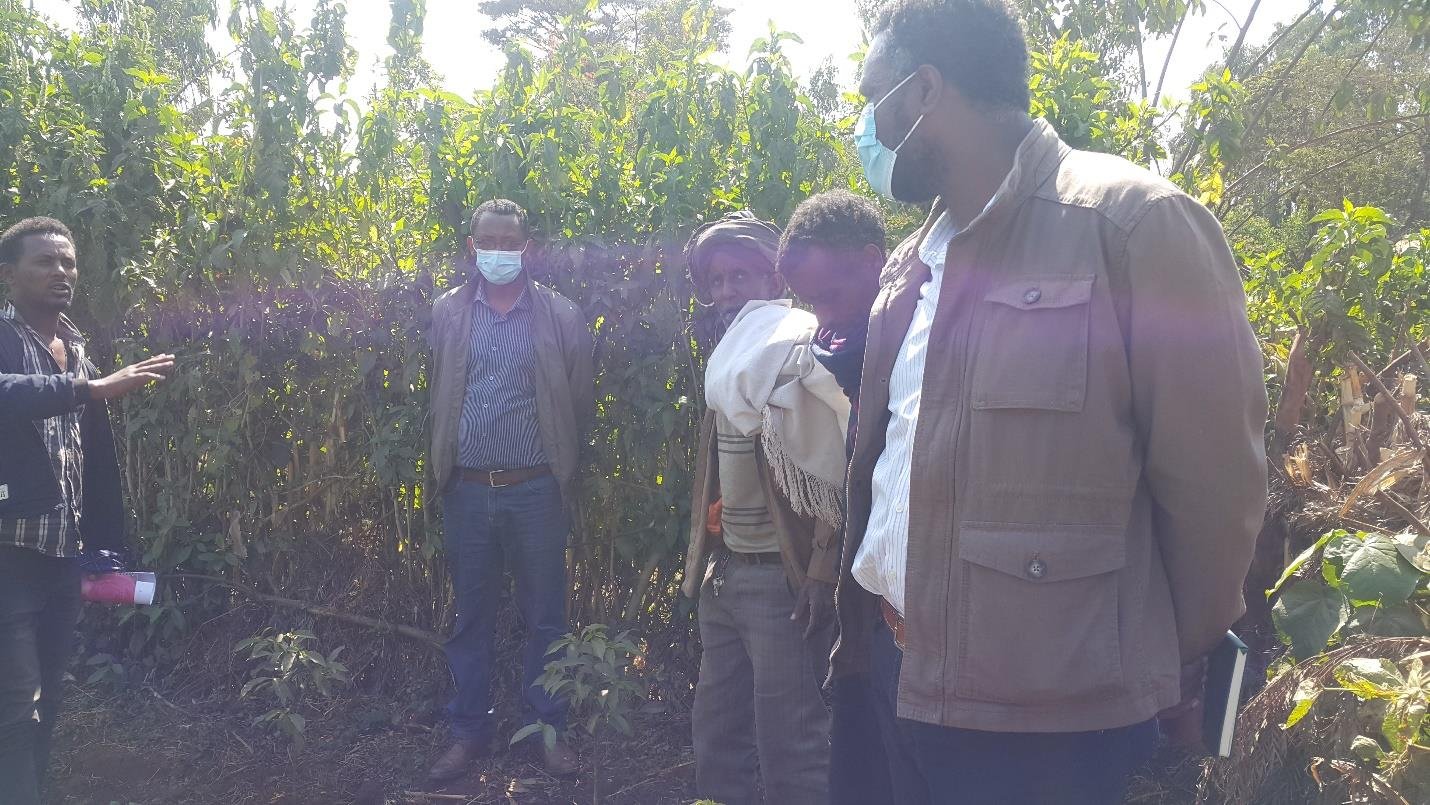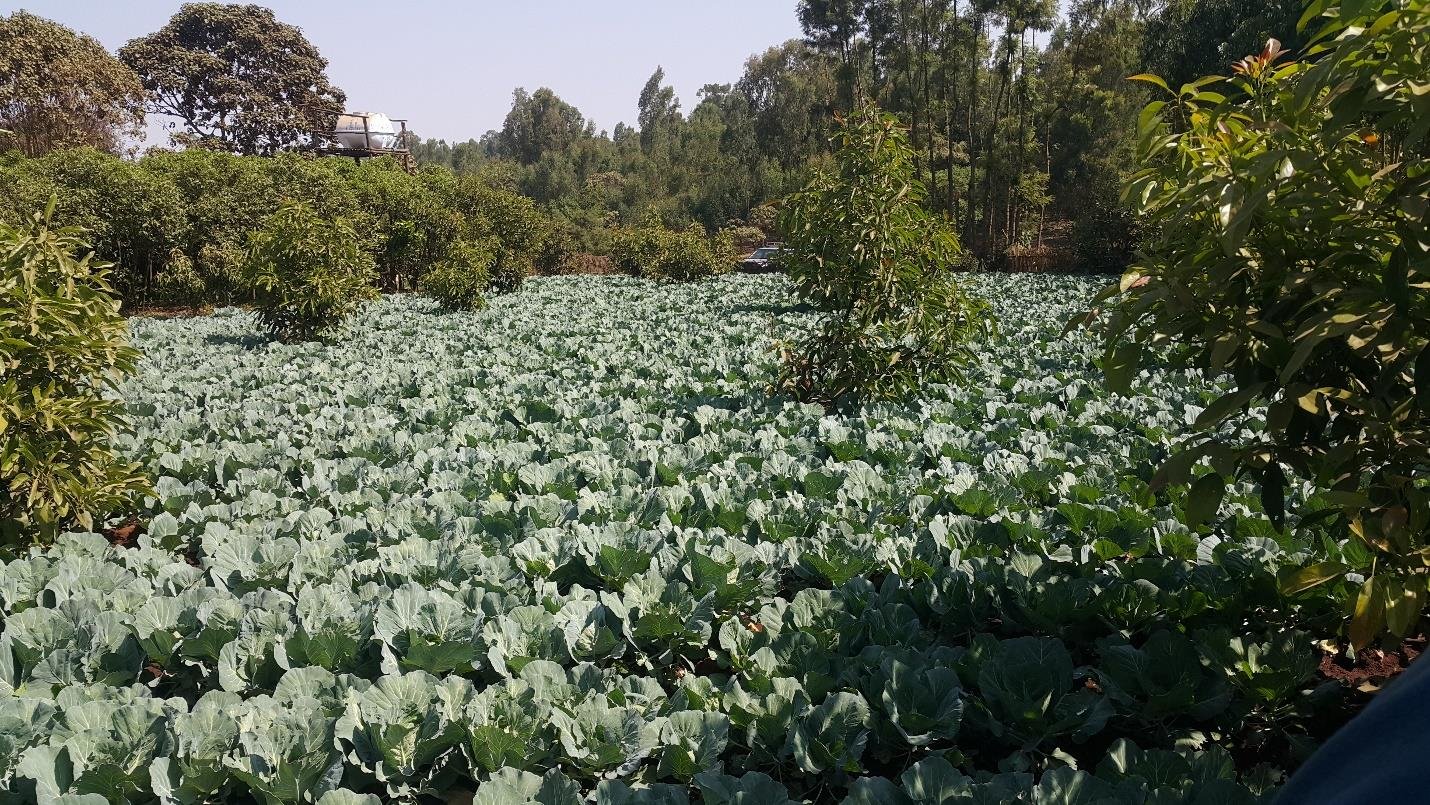Cycle 5 (2015 Deadline)
Bringing seasonal forecasts to the farmer: participatory climate smart villages for Green Growth in Ethiopia
PI: Belay Simane (simaneb@yahoo.com; belay.simane@aau.edu.et), Addis Ababa University
U.S. Partner: Benjamin Zaitchik, Johns Hopkins University
Project Dates: December 2016 - May 2021
Project Overview:
 | | Farmers working to secure a climate smart village. Photo courtesy of Dr. Birhanu |  | | 2021 Local village. Photo credit: Dr. Birhanu |  | | 2021 Field Monitoring by research group. Photo credit: Dr. Birhanu |  | | 2021 Local field monitoring in progress. Photo credit: Dr. Birhanu |
Climate change adaptation is a high priority for Ethiopia and other climate-vulnerable countries. At the farm and village level, however, long-term planning for climate change means very little. Subsistence agriculture communities survive on a year-to-year basis, and the productivity of the coming season’s crops is typically too important and is often too uncertain to allow for adaptation planning on the decades-long time horizon of climate change projections. In this context, improved use of seasonal forecasts offers a climate resilience building strategy that pays dividends under current conditions and is likely to become even more essential as patterns of climate variability shift in coming years. The use of seasonal forecasts is also flexible and adaptable to context in a way that few adaptation strategies are. A specific cropping technology or seed variety may not work across agroecosystems, but improved approaches to interpreting and acting on seasonal climate forecasts can contribute to resilience in a wide range of settings.
The guiding principle for this project is that seasonal forecasts generated at the agroecosystem level, developed collaboratively with farmers, will advance understanding of the adaptation process and contribute to climate resilience in subsistence-based communities.
The proposed work would leverage and expand a climate smart village (CSV) network that has proven to be an effective mechanism to engage farmers in generating climate resilience solutions. The CSVs will inform application of forecasts through participatory forecast interpretation and communication.
They will also provide a platform for linking forecasts to culturally and ecologically appropriate actions to make use of forecast information. Meanwhile, the project focus on best-available seasonal forecasts will add a dimension of capabilities to CSVs that is currently absent.
Final Summary of Project Activities
The project team implemented a sustainable institutional infrastructure that will be used to study resilience over longer time periods. Many CSA practices incur establishment and maintenance costs that are not affordable by subsistence farmers. It also requires a considerable time before farmers benefit from them. Therefore, a long-term support and subsidy system is essential for sustainable future.
Establishing climate smart villages and implementing climate smart agriculture (CSA) are both knowledge and capital intensive, and require long-term support. Subsistence farmers found it hard to innovate and invest in better land management and climate smart agriculture. Therefore, the skill and capacity building effort should be location-specific and provided by very senior and senior experts and researchers. Further scaling up of best sustainable green technologies and approaches will be only materialized at the local level by establishing business model enterprises will be a viable option to expand CSA practices. The team plans to continue and reinforce the following activities for a sustainable future at CSV levels:1) Establish clear decision-making processes and transparency among the lead offices and institutions (DMU, Agriculture, environment, cooperative, NGO, ) to manage and coordinate the climate-smart agriculture at community levels. 2) Establish and facilitate a platforms for stakeholder engagement and consultation, including the private sector and ensuring the inclusion of small holder farmers. 3) Provide adequate and accessible climate information services to farmers and other agricultural decision makers. 4) Produce agreed-upon vision and goals that balance food security, adaptation and mitigation at village level and regional levels. 5) Expedite additional financial resources including rural credit to individual farmers. 6) Give more focus to renewable energy and backyard fruit and vegetable development that enhances nutrition and food security at local levels. 7) Scale up best sustainable green technologies and approaches by establishing business model enterprises outside CSVs as a viable option to expand CSA practices.
Based on the PEER project, local governments have adopted the conceptual and analytical framework to plan and implement a Climate Compatible Development (CCD) which is a new concept that bridges climate change adaptation, mitigation, and community-based development (‘Triple wins’). Universities have also adopted the research approach to establish and promote Climate Smart Villages in other areas.
Peer reviewed journals and proceedings:
Dendir, Z., and Simane, B.,. "Farmers’ perceptions about changes in climate variables: Perceived risks and household responses in different agro-ecological communities, Southern Ethiopia." Climate Services, vol. 22, 2021, article 100236. ISSN 2405-8807. https://doi.org/10.1016/j.cliser.2021.100236.
Ewunetu, A., Simane, B.,Teferi, E., and Zaitchik, B. "Relationships and the Determinants of Sustainable Land Management Technologies in North Gojjam Sub‐Basin, Upper Blue Nile, Ethiopia." Sustainability, vol. 13, 2021, p. 6365. https://doi.org/10.3390/su13116365.
Ewunetu, A., Simane, B.,Teferi, E., and Zaitchik, B.. "Mapping and Quantifying Comprehensive Land Degradation Status Using Spatial Multicriteria Evaluation Technique in the Headwaters Area of Upper Blue Nile River." Sustainability, vol. 13, 2021, p. 2244. https://doi.org/10.3390/su13042244.
Ewunetu, A., Simane, B.,Teferi, E., and Zaitchik, B.. "Land Cover Change in the Blue Nile River Headwaters: Farmers’ Perceptions, Pressures, and Satellite-Based Mapping." Land, vol. 10, 2021, article 68. https://doi.org/10.3390/land10010068.
Gemi, Y., and Simane, B. "Assessing the Impact of Watershed Management Interventions on Livelihood of Small-Scale Farmers and Ecosystem Services in Choke Mountains, East Gojjam Zone of Amhara Region, Ethiopia." Global Journals, vol. 20, no. 3, 2020. Online ISSN: 2249-4626, Print ISSN: 0975-5896.
Mesfin, D. et al . "Assessing the Adaptive Capacity of Households to Climate Change in the Central Rift Valley of Ethiopia." Climate, vol. 8, no. 10, 2020, article 106. https://doi.org/10.3390/cli8100106.
Mesfin, D., et al. "Woodland Cover Change in the Central Rift Valley of Ethiopia." Forests, vol. 11, no. 9, 2020, article 916. https://doi.org/10.3390/f11090916.
Sankaranarayanan, S., et al. "What Are the Domestic and Regional Impacts from Ethiopia’s Policy on the Export Ban of Teff?" Frontiers in Sustainable Food Systems, vol. 4, 2020, article 4. https://doi.org/10.3389/fsufs.2020.00004.
Back to PEER Cycle 5 Grant Recipients
|







